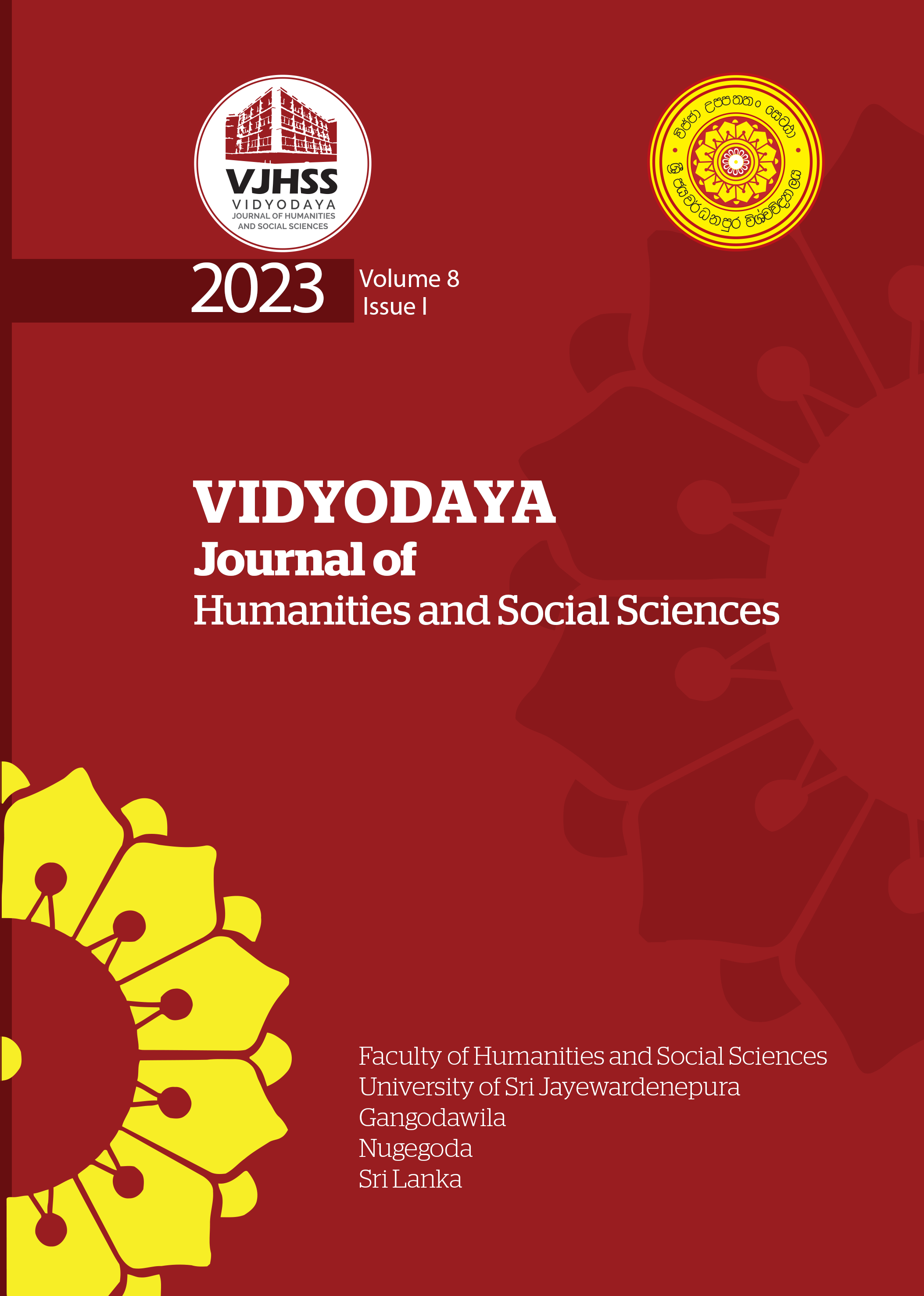Design Basis of Decorative Motifs Used in Sri Lankan Weapon Designing During the Kandyan Period
Abstract
Design basis of decorative motifs used in Sri Lankan weapon designing in Kandyan period has been studied by this research. This study focused on investigating the strategic usage of decorative motifs to fulfill the designing requirements in the production process of weapons as an applied art product in Kandyan period. Accordingly, the objective of this research was to study the technical approach of the use of traditional artistic motifs for fulfilling the designing requirements. While the study followed a qualitative research approach, Museum studies, field studies, photography, drawings and illustrations have been used to collect the data for this research. Accordingly, all the locally manufactured traditional weapons and firearms displaying in Sri Lankan museums that have identified as belongings to Kandyan period have been used as study sample of this research. Iconology and formalism have been used as methodologies to analyze data and the grounded theory of this research was Sven Ove Hanson’s aesthetic functionalism theory. Above mix methodology was useful to investigate the meanings of traditional motifs as well as visual and structural analysis of the data. In conclusion, decorative motifs used in Sri Lankan weapons in Kandyan period can be identified as a design factor more than artistic application and those decorative motifs have been used as strategic applications such as concept, inspiration, and create visual form as well as structural requirements for the weapons.



